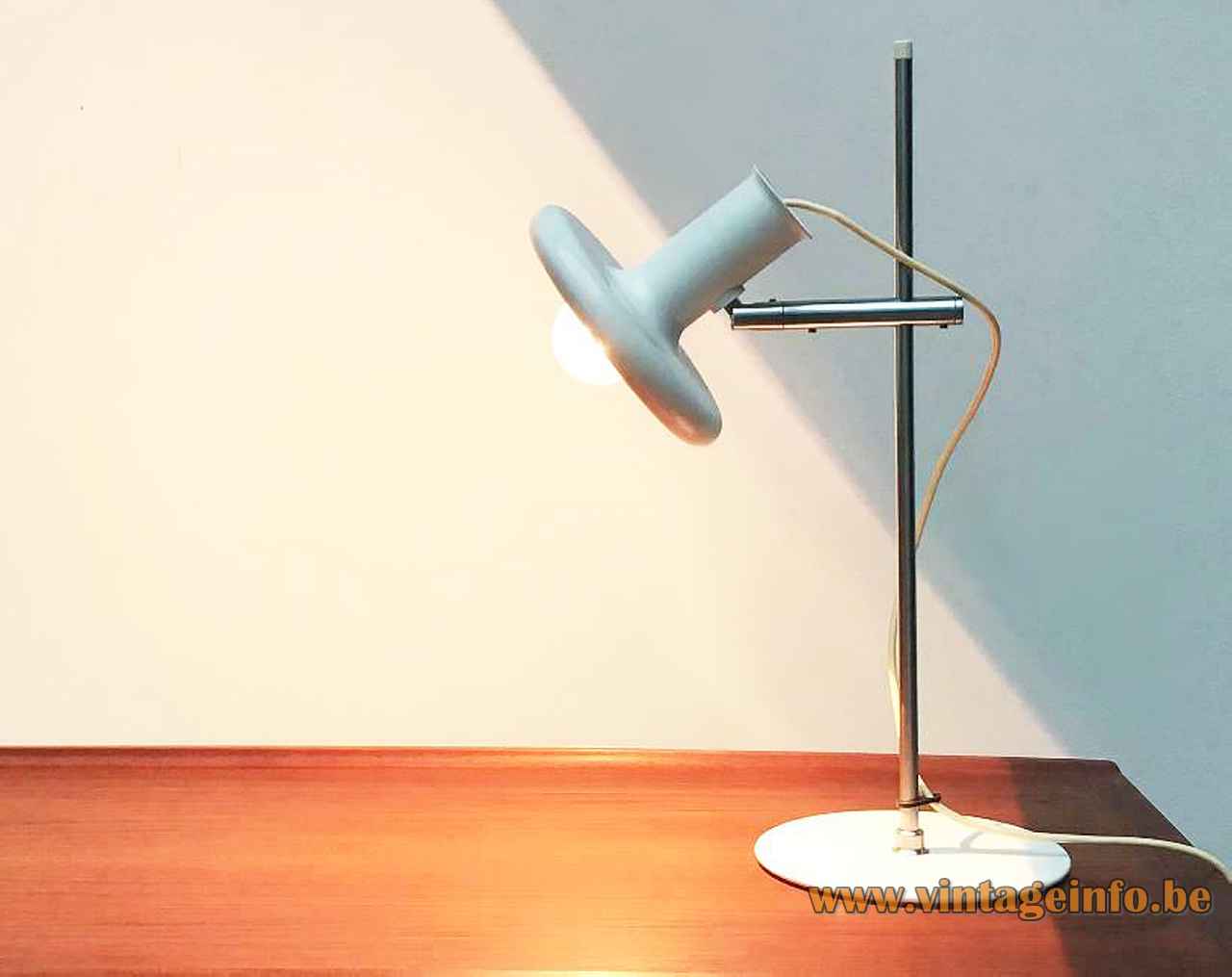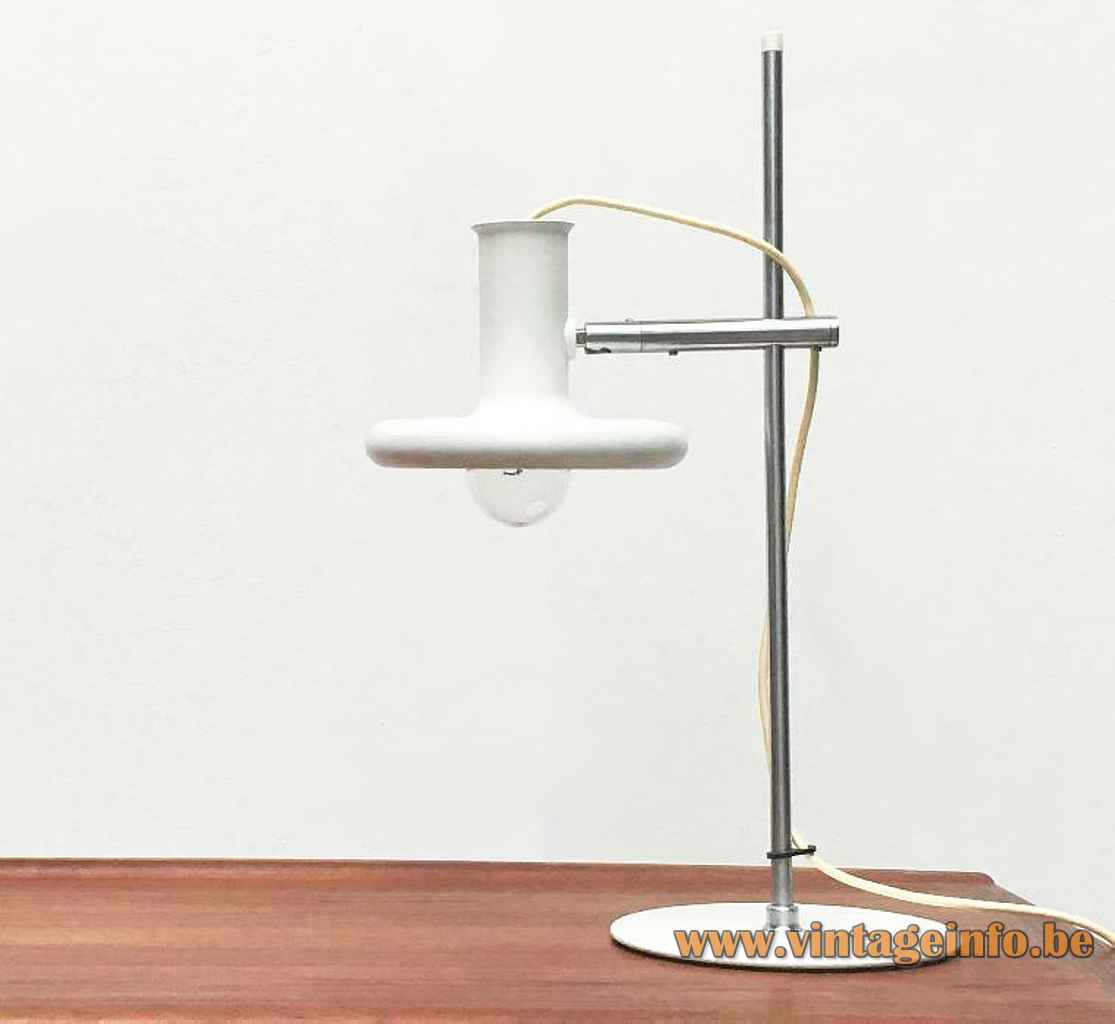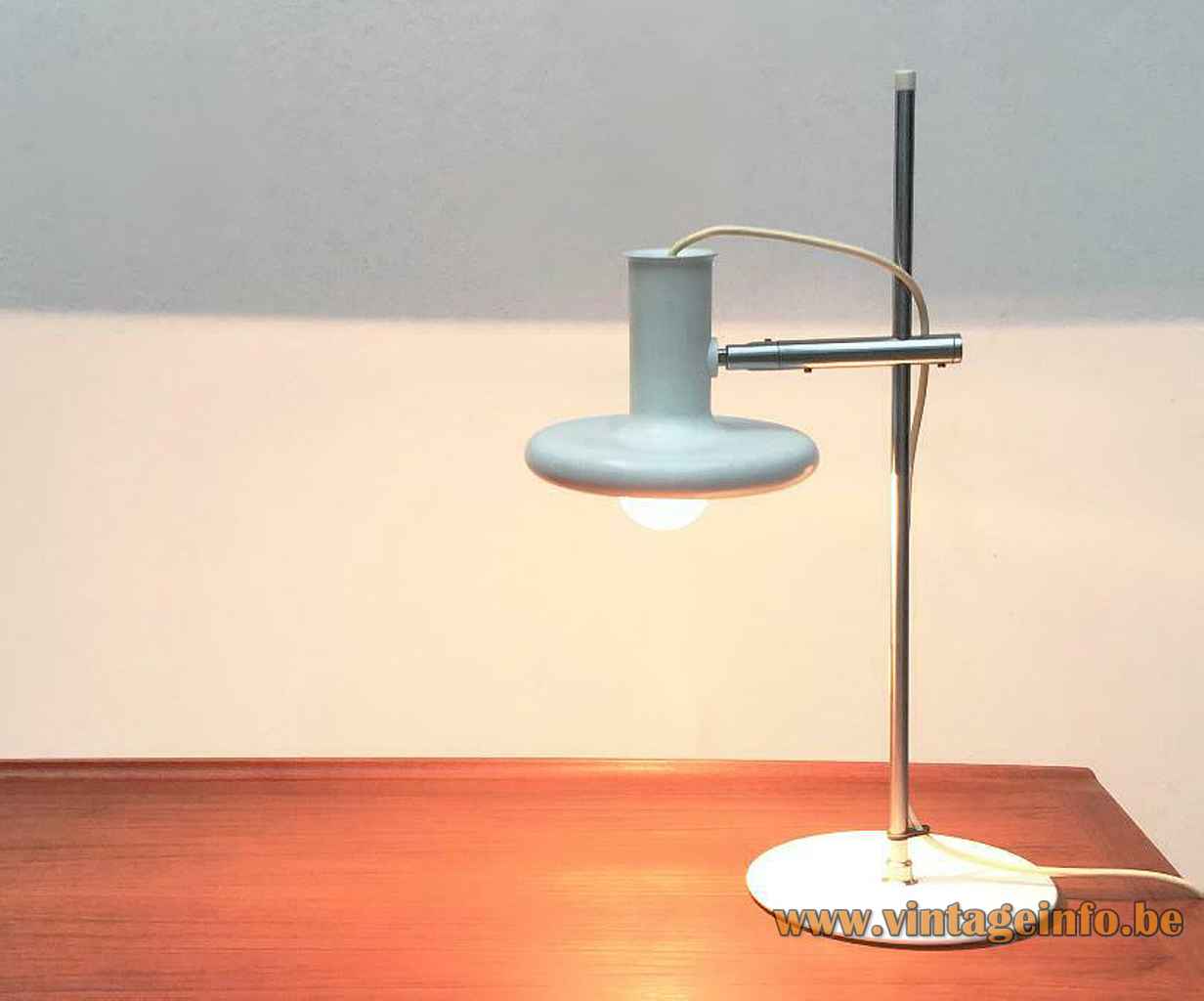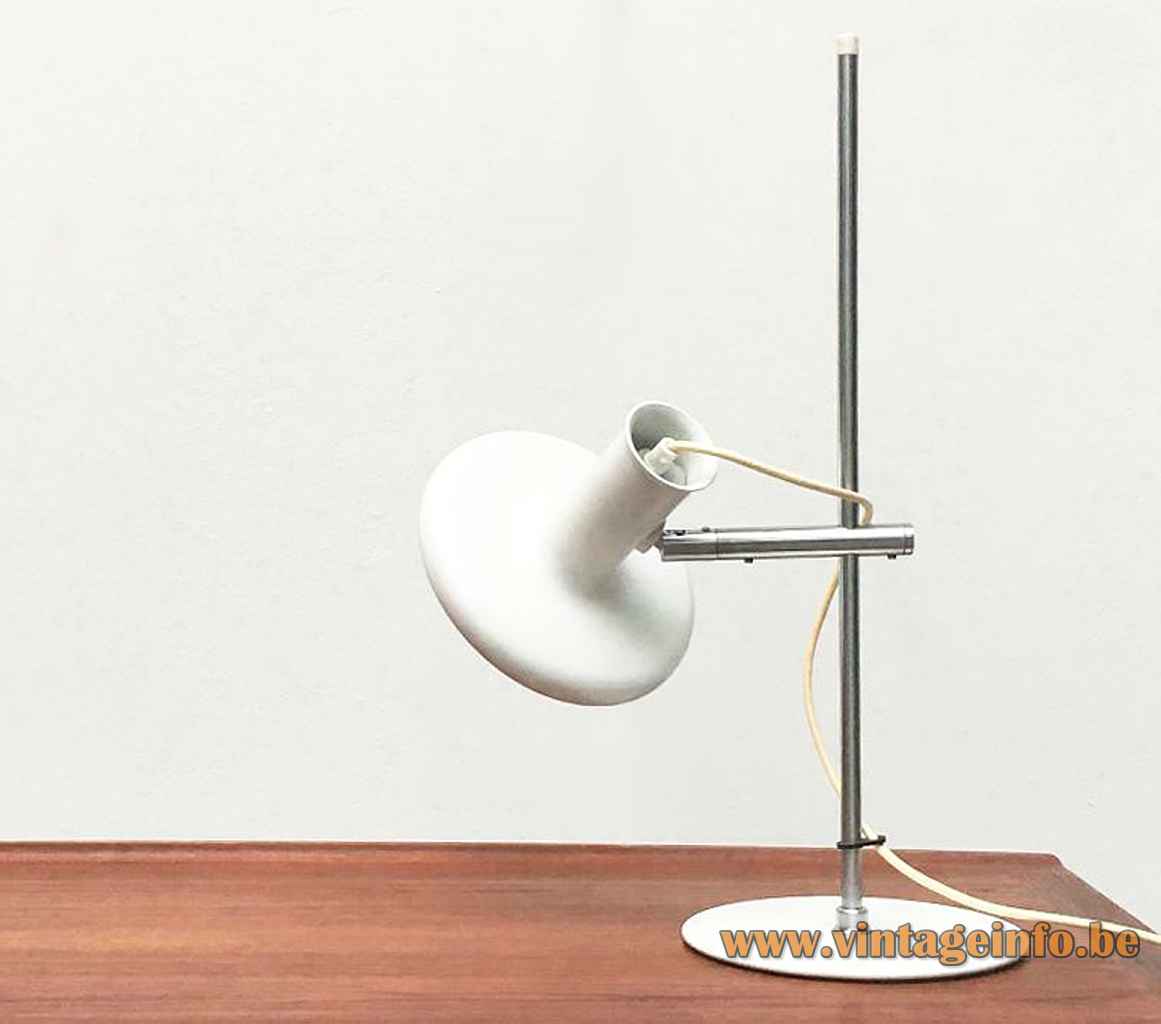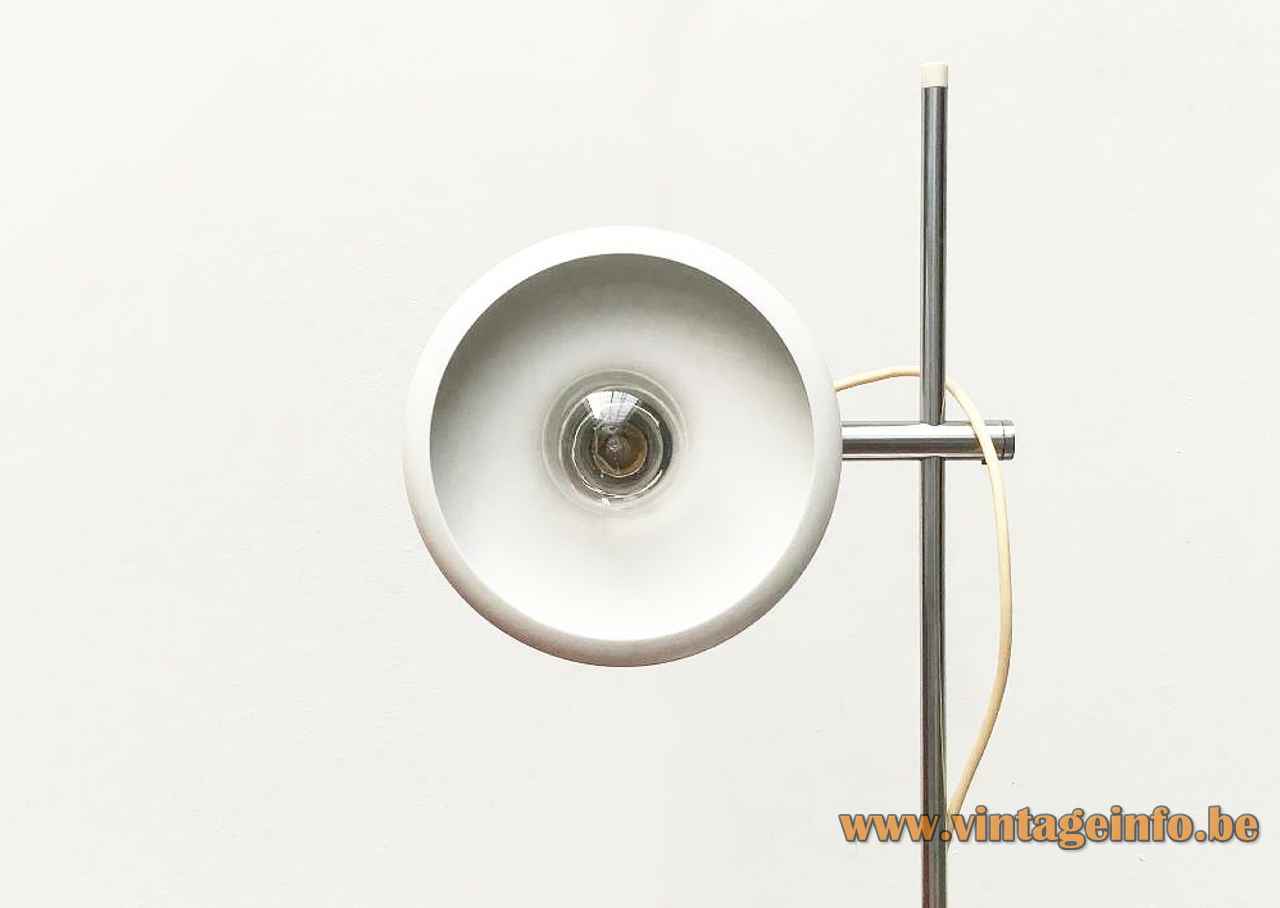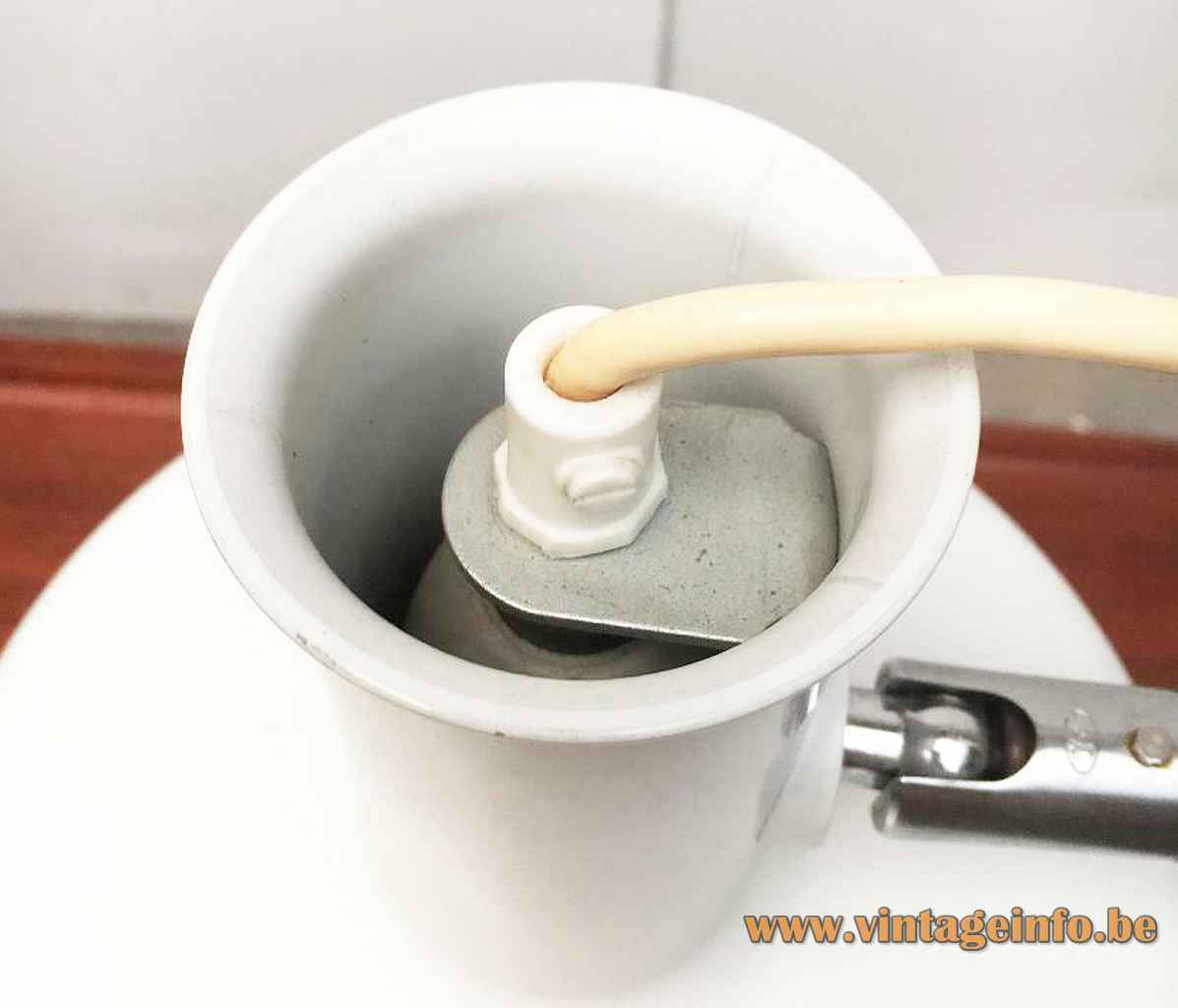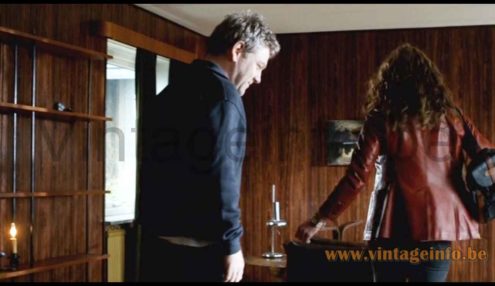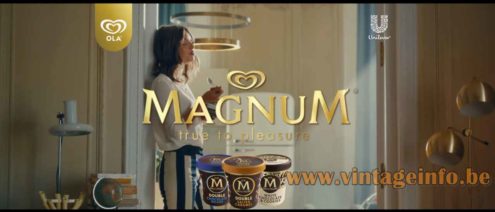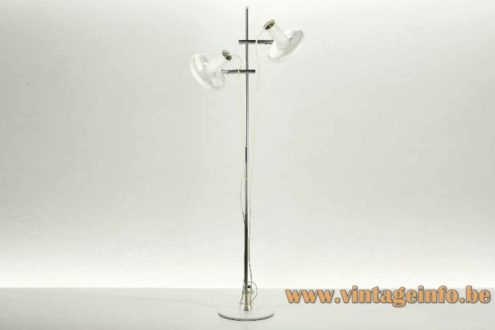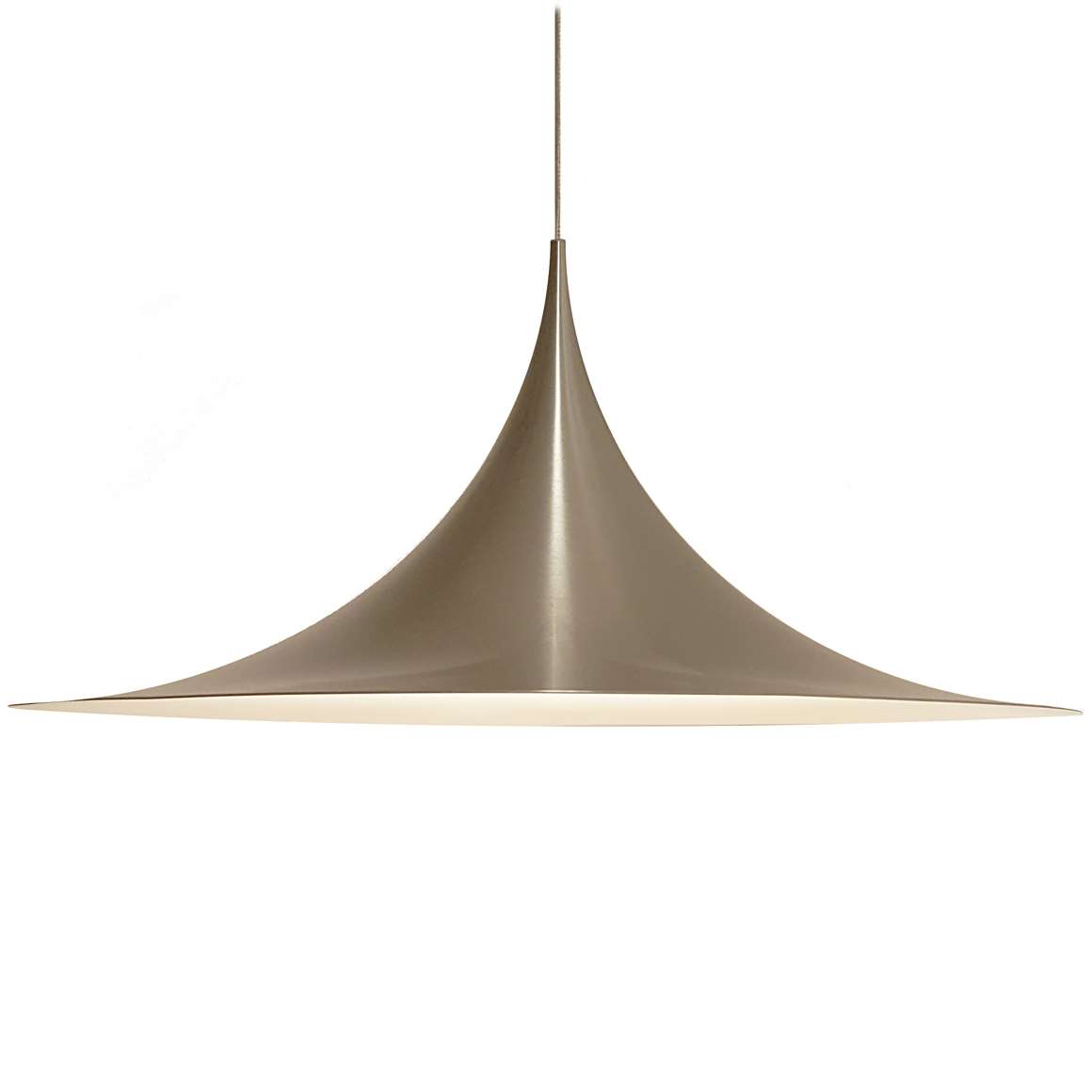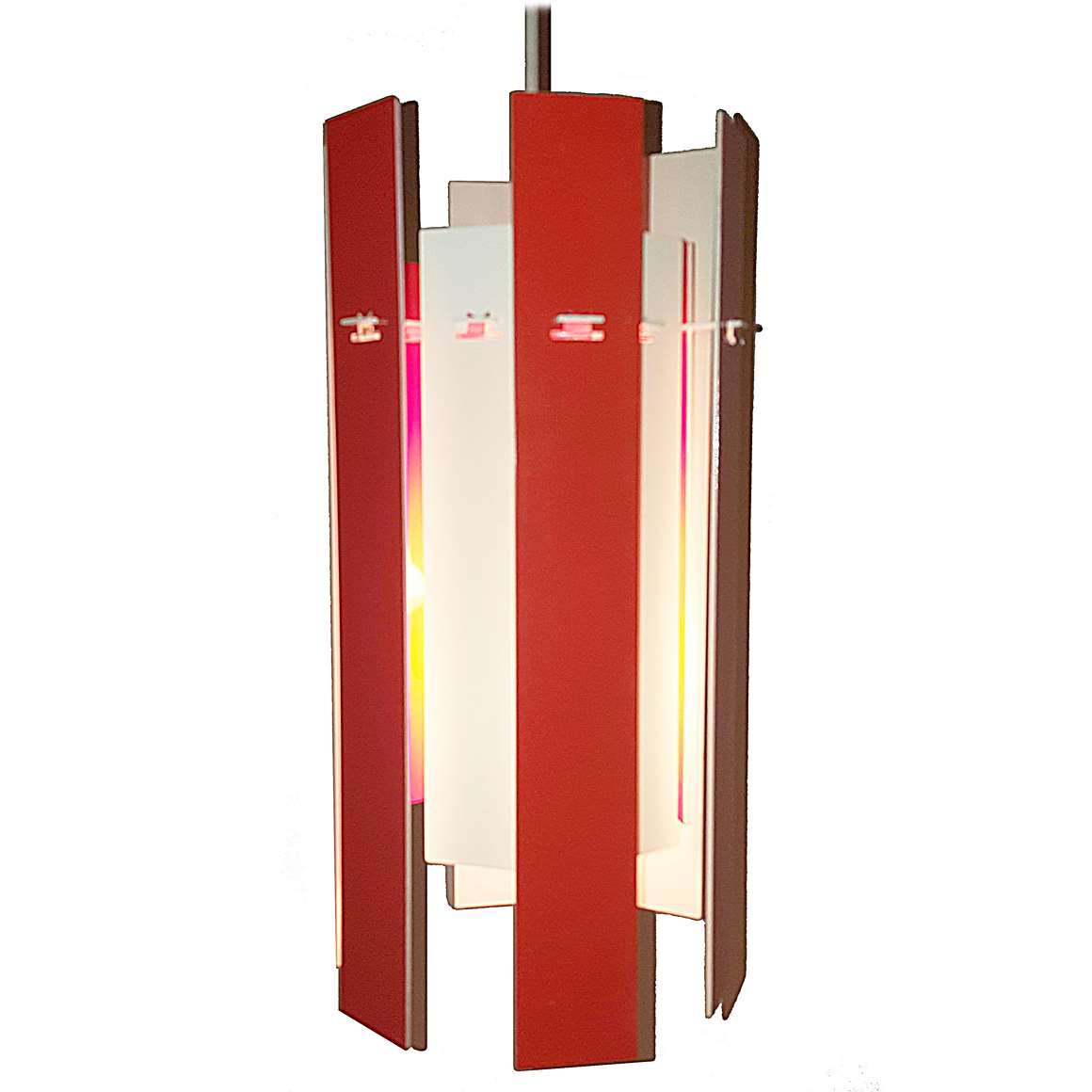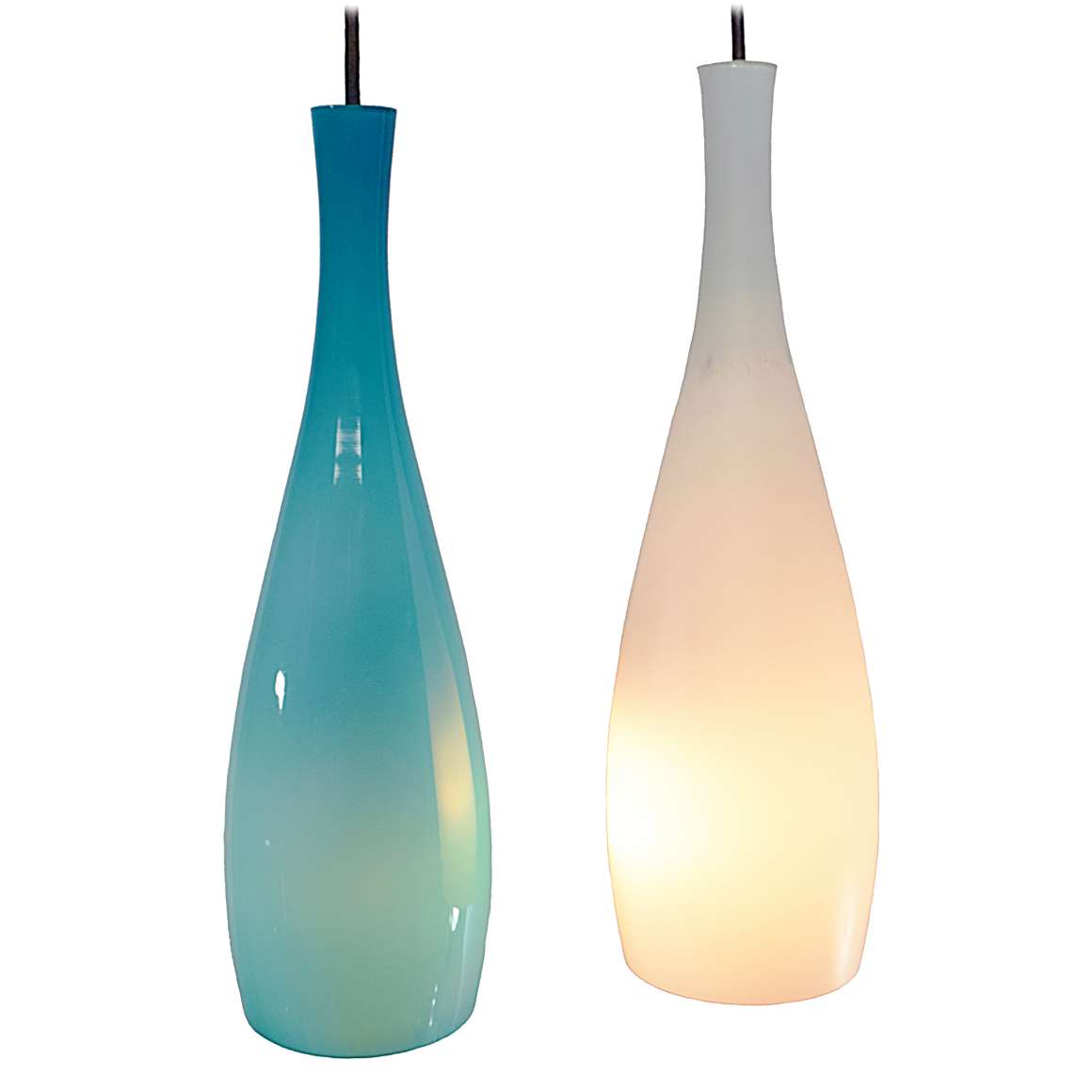Fog & Mørup Optima desk lamp – Catalogue picture
Lamps In The Movies
A chrome Fog & Mørup Optima desk lamp was used as a set decoration in the 2008British TV series Wallander. Here in season 1, episode 1. Starring Kenneth Branagh, Sarah Smart and Tom Hiddleston. Many other lamps appear in this series.
A Fog & Mørup Optima desk lamp or floor lamp was used in a 2021, 2022 commercial of the Ola Magnum double salted caramel ice cream.
Fog & Mørup Optima floor lamp
Fog & Mørup Optima Desk Lamp
Materials: White painted metal (iron) base. Chrome rods, joint and ornamental screw. Adjustable round white aluminium lampshade with a white painted tube on top. Some metal and plastic parts. White painted Bakelite E27 socket.
Height: 56 cm / 22.04”
Lampshade: ∅ 20 cm / 7.87”
Max Width: 34 cm / 13.38”
Base: ∅ 21 cm / 8.26”
Electricity: 1 bulb E27, 1 x 60 watt maximum, 110/220 volt.
Any type of light bulb can be used, no a specific one preferred.
Period: 1970s – Mid-Century Modern.
Designer: Hans Due in 1972.
Manufacturer: Fog & Mørup A/S, Copenhagen, Denmark.
Other versions: The Fog & Mørup Optima desk lamp exists in several colours. Wall, pendant and floor lamps were also made. The big pendant lamp can be found over here. The small pendant lamp version over here.
The Optima pendant lamp and how it was created is described in the book Danish Lights – 1920 to Now on page 130.
Hans Due
Hans Due (born 5 January 1941 in Nyboder, Copenhagen, Denmark) is a graphic designer, painter, and photographer. From 1956 to 1958 he studied under the illustrator Des Asmussen, the painter August Toersleff, and the sculptor Professor Gottfred Eickhoff.
From 1958 to 1963, Due trained at a graphic design studio in Copenhagen, and in 1965 he graduated from the Graphic Arts Institute of Denmark in Copenhagen. That same year he spent a year in Paris, France, studying graphics and photography.
From 1966 to 1974, Due worked as a graphic designer and art director at various advertising and design firms. In 1974 he founded his own company, Due Design A/S, where he remained active until 2005.
For Fog & Mørup he designed the Optima lamp series, the Phister lamp, and the Formel lamp series.
Since 2005, Due has also been active as a painter. His “New Realism” works have been exhibited in many venues over the years.
Fog & Mørup
Ansgar Fog (1880–1930) and Erik Mørup (1879–1972) founded their business in 1904 as a metalwork wholesaler. Two years later they moved to Copenhagen, shifted their focus to lighting production, and over time acquired several electrical and lighting companies. Fog & Mørup emerged as a key force in lighting design in the early 1960s, following the appointment of Jo Hammerborg as head of design in 1957.
Notable designers and architects who worked with the company include: Claus Bonderup, Torsten Thorup, Sidse Werner, Sophus Frandsen, Jørgen Bo, E. Balslev, Peter Avondoglio, Karen Clemmensen, Ebbe Clemmensen, Hans Due, and of course Jo Hammerborg.
Lyfa
In the late 1970s, Fog & Mørup merged with Lyfa, another leading Danish lighting producer. In 1980 Jo Hammerborg retired. A few years later, Lyfa–Fog & Mørup was taken over by Lyskær, and the name changed to Lyskaer–Lyfa.
Lyskaer–Lyfa produced lights until 1991, when it was incorporated into Horn Belysning A/S of Aalstrup, Denmark, which was itself taken over in 2005 by Nordlux of Ålborg and, to a large extent, dismantled.
Horn Belysning
Horn Belysning A/S was founded in 1952 as a family business, initially named E.S. Horn. In 1963 it became Horn Belysning (Horn Lighting).
The company produced lighting for IKEA and several other European retail chains. It designed products and also imported lighting from China. In the 1980s Horn was the second-largest lighting company in Denmark.
In 2005 the name changed to Lightyears, which today is owned by Republic of Fritz Hansen.
Links (external links open in a new window)
The Optima pendant lamp in the book Danish Lights – 1920 to Now
Nyboder, Copenhagen, Denmark – Wikipedia
Fog & Mørup – Wikipedia (in Danish)
Horn Belysnign history on Danish Vintage Design
The story of Fog & Mørup, Danish modern lighting’s superstar
Vintageinfo Links
Many thanks to Frank from nullviernull raum+kommunikation for the pictures. You can find his shop over here on Pamono.
Many thanks to Lluís from Eclectique Vintage for the photo of the floor lamp.

